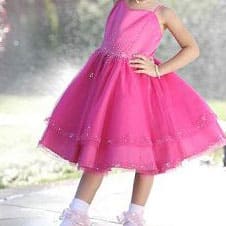
Below, we detail the conclusions we have reached.
Mainly there are two ideas: the one we all know that leads us to believe that it is the work of the marketing and advertising that influences the girls to be attracted to this color; although we have discovered some curious things like that, according to the historian Jo B. Paoletti, prior to World War I in the United States, for example, no pastel shades were used for babies but simply white. Later they began to take these colors but blue was for the girls because it was more “delicate and kind” and pink for the boys because they considered it “determined and strong”. This distinction could also be seen in Europe although the criteria varied from country to country. In France, pink was already used for girls and blue for boys. However, in Germany, Belgium or Switzerland, it was the other way round and the trend would not change until the 1920s, becoming definitively widespread in the 1970s.
In the 80s, pink completely displaced other alternatives as a colour trend in products for girls. In the 80s, pink completely replaced other alternatives as a colour trend in products for girls, reaching our days, when, according to the aforementioned historian, there is much more differentiation by sex than in previous centuries.
And the other idea, developed by the University of Newcastle (United Kingdom), in which a study carried out on 208 British men and women, among whom 37 Chinese men and women who had just arrived in the United Kingdom, discarded the cultural influence, showed that although in general men and women preferred the colour blue, women showed a clear predilection for lilac and pink tones; And they concluded that this chromatic preference went back to the first humans when men hunted and women gathered, developing a natural instinct that identified those pink and reddish tones with the maturity of the fruits.
We will conclude that maybe there is some biological cause in the fact that girls love the color pink but it is more likely that we have turned a natural fact into a cultural one and that together with the strong advertising influence has resulted in the situation we talked about at the beginning of this post:
-“My girl wants something pink.”
– “What?
-Never mind. -Pink it…
